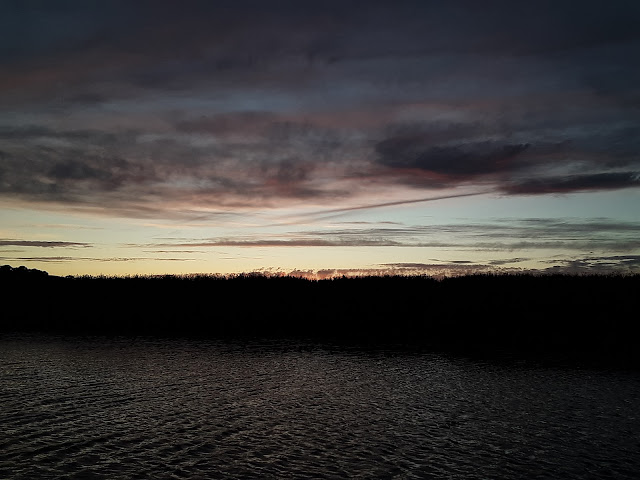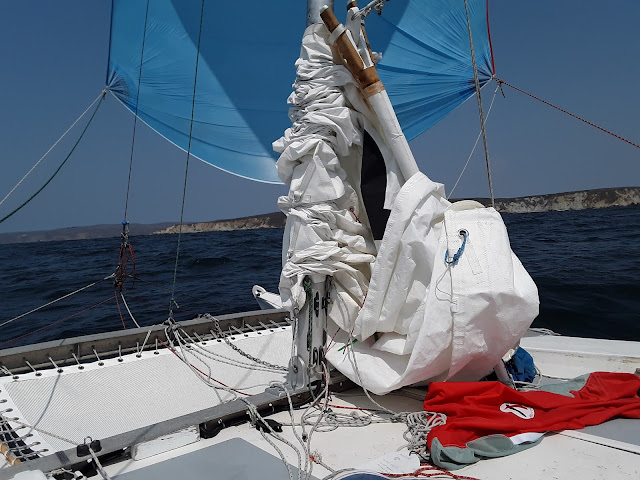This is that last in a series of posts on the new rig that I built for Little Cat in the Fall of 2019.
The forestay and shrouds were made up from 3/16 7x7 316 stainless wire. This is one size over the 5/32 size specified in the Wharram plans. I calculated the length of the shrouds on paper, but left the forestay long so that I could raise the mast and cut it exactly to length on the boat.
 |
| First swage being formed. Second swage ready to go next. Polypropylene tube in place before forming the swage. |
The mast loops and heart-eye thimbles were formed using nicopress swages. I got a used nicopress tool off Craigslist and did all of the swages up to 1/4" size in my bench vice as shown. I had to remember to put polypropylene tube and heat shrink tube onto the wire before forming the swage. The poly tube is to protect the wire and aluminum mast from wear, and the heat shrink is shrunk over each swage to make a neater finish that won't catch on lines.
 |
| Finished double swage with heat shrink ready to go. |
The swages were doubled up for peace of mind. Only one is necessary, and two can be a problem if they are formed without a slight gap between them, but I took care to leave a fraction of a mm between each swage so that they did not bind against each other.
 |
| Finished double swage with heat shrink. |
The Wharram plans specify a wooden cleat on the mast to hold the stay loops in place. I couldn't find a suitable stainless or aluminum substitute so used two heavy duty eye straps screwed to the mast with tapped threads. This set up has the added advantage that the stays are not going to fall off the mast when moving it about or lifting it into position.
 |
| Looking from top to bottom front of mast, forestay in front. Upper (near) slot is for spinnaker halyard sheave, lower slot is for jib halyard. |
I opted for internal halyards and used Allen HA6 sheave boxes. There are four sheaves at the top of the mast (throat, peak, jib and spinnaker) and four sheaves at the bottom of the mast exiting to horn cleats (see "New Rig #3").
 |
| Allen HA6 38mm Sheave, Plain Bearing, Aluminum Body, Sheave Box |
I worried that the Allen sheave boxes might not be strong enough as they are designed for big dinghies, but they have been completely reliable and are vastly stronger than the small blocks specified in the Wharram plans.
 |
| Side view. Forestay on top. |
How has the rig worked out? The 4 feet of extra mast height allows lifting the mainsail so that there is 4 - 5 feet of clear space between the foot of the main and the deck. This greatly improves visibility and allows easy movement under the sail. It also allows the sail to be carried much higher up the mast in light air. The extra mast height also allows me to carry a very large spinnaker in light air. My big ass spinnaker will pull the boat at whatever the windspeed is: 5 knots of wind astern = 5 knots of boat speed. This is a huge asset on long downwind trips (see "Spinnaker Run to Tamales Bay").
The rig is bullet proof and gives me peace of mind on long trips in open water. I have several thousand miles on the rig at the time of posting - no problems except that the mast mounting pin has become seized in the mast base, and I need to undo the 8 mounting bolts to take the mast off, instead of just pulling the pin. I made the pin too tight a fit in the mast and didn't use enough anti-seize. It has no effect on the performance of the rig - just a little longer to remove the mast.






































